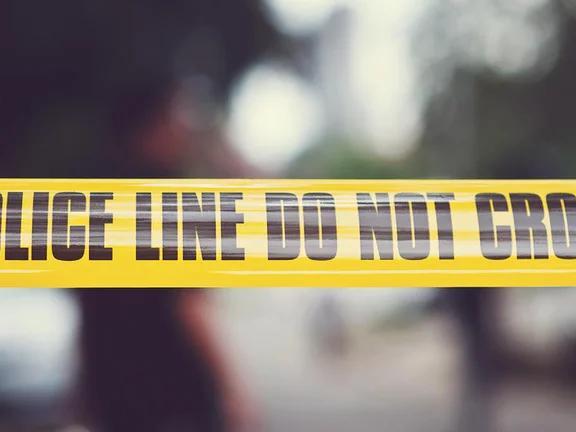Interesting perspective, especially since I've been trying to hold off Walmart, Sam's Club, and Amazon orders until they'll be substantial to save on traffic.
The City That Never Sleeps … or Shops in Person
Walking through New York City — America’s great harborer of people, culture and activity — can feel like strolling the world’s largest outdoor mall. Opportunities to acquire are everywhere, waiting either around the corner or at the end of a subway ride: exotic foods, knickknacks, records, books, medicine, tents, computers, sunglasses and everything else. It’s difficult to imagine a product one can’t buy in Manhattan, let alone the boroughs.
So why, oh, why are over
2.4 million packages delivered in this city every single weekday?
If those packages were people, they’d be metropolitan
Austin, Texas. If they were stone blocks, they’d top the Great Pyramid of Giza. Even if each of those packages were as thin as the Postal Service’s smallest priority shipping box — an inch and three-quarters thick — when stacked like books, the daily pile would be as tall as 241 Empire State Buildings, one atop the other.
Since 2009, New Yorkers have been increasing their number of daily household deliveries like a rash. By 2017, it had
tripled to more than 1.1 million. The figure swelled to 1.5 million by 2019. Then, within the four following years — even as deliveries
decreased nationwide — the daily number grew by 60 percent.
This city isn’t equipped to accommodate the delivery trucks, cars and motorbikes needed to move such an amount — not without cost. Our traffic, pedestrians and already precarious air quality are suffering, and neither a measly monopoly
lawsuit against Amazon nor government-authorized
delivery bikes will be of much help. The package flood can be dammed only by its sources: lazy, track-pad-happy New Yorkers.
For a while, the pandemic was a valid excuse for buying online. To avoid spreading the virus, housebound Americans inflamed their long-growing
dependency on e-commerce, with online sales increasing by
43 percent in 2020. Now, New York, like everywhere else, has moved on from social distancing: Subway ridership is
up and mostly unmasked, and tourism’s certainly back. But our retail sector’s recovery
lags the nation’s. New Yorkers — though largely stuck in small apartments you’d think they’d love to escape — have become too accustomed to the convenience of sedentary buying. Online shopping remains the default.
The Manhattan borough president, Mark Levine, put out a
report last fall about the delivery surge, which “exacerbates congestion, road safety issues, air pollution, greenhouse gas emissions, package waste and a variety of other quality-of-life concerns in Manhattan and throughout the city.” The main problem here is
last mile delivery, the last step in the journey a package takes from a warehouse to a customer’s doorstep.
It’s that last mile that
stuffs the streets with carriers’ trucks, vans and motorbikes, all of which dose the air with carbon dioxide, with large delivery vehicles
contributing the most dangerous particulate matter. They worsen already high concentrations of traffic-related pollution in poor neighborhoods, which suffer the most. The trucks often park on sidewalks and in bike lanes or simply double park, plugging up traffic, which means that not only are pedestrians and cyclists inconvenienced or put in danger, but that all vehicles must stay on the road for longer, spitting fumes. If business continues as usual, the
World Economic Forum predicts, emissions from delivery traffic in the world’s 100 largest cities will rise 32 percent by 2030, while traffic congestion will increase by more than 21 percent.
The next big thing in New York delivery is the extra-large
commercial cargo bike. These are electric bicycles attached to metal storage containers, just bigger than your average golf cart, which over-excited city officials may give the go-ahead to perch on sidewalks, the rationale being that e-bikes are better than cars. I agree. But you know what’s better than e-bikes? Cutting back on the more than 12 million packages delivered every week.
A package enjoying its last mile on an e-bike doesn’t mean it hasn’t been made from plastic in another country, flown or shipped to this one using oil or coal and packaged in a plastic envelope or cardboard box. Waste abounds (even if recyclable, this material
rarely finds new life). If we want to do better for the environment, we shouldn’t be taking steps to enable more e-commerce, but instead considering how much we could help ourselves by not buying online.
That seems simple, but our problem runs deep. Americans have been nursing a
shopping addiction for a while, and e-commerce has only deepened our problem. The psychologist Joshua Klapow told
Time magazine that online shopping is “psychologically so powerful.” It can temporarily lift one’s mood, providing a special type of retail therapy purified by a total lack of effort. E-buyers can
bypass the schlep, the dreaded walk-around inside a store, the money handling or grueling Apple Pay tap. The human interaction.
As urban designer David Vega-Barachowitz told
MIT Technology Review, New Yorkers’ delivery problem grew from repeated failures to appreciate the opportunities in their own neighborhoods. “We live in a city whose main pitch is the ability to walk out your door, get a carton of milk, go to a bookstore, go to a movie, etc.,” he said, “and convenience culture is threatening all of that.”
And unlike most Americans, who do most of their in-person shopping in
eco-unfriendly cars, New Yorkers have access to a huge system of more
sustainable public transportation. Our shopping trips can blend into that system without making a splash.
There are a few valid reasons people might choose to order something online. Maybe they are unable to leave their home. Maybe a store doesn’t have a garment in their size. But such motivations apply to a minority of commerce cases.
For most, it’s time to quit the safety blanket. It’s time to relearn the commuter’s detour, the leaving of the house or the simple abstention from an unnecessary online purchase. If you can, try cutting online ordering for a month. Consider the difference between want and need. Buy used things. Save money. Save carbon. Discover what your city has to offer. It’s a dare.











